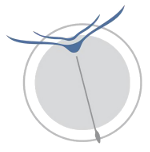Factors underlying the local and global movement patterns of a long-distance social migrant, the Common crane and their consequences on gut microbiome
The phenomenon of migration exposes individuals to a wide range of ecologically disparate and seasonally variable habitats that may be separated by hundreds or thousands of kilometers. Appropriate space use and scheduling of the different migration stages is crucial for annual survival and reproductive success of migrants. The migration journey is especially challenging for juveniles; however, migratory performance gradually improves with age and presence of experienced conspecifics. Understanding the movement patterns of long-distance social migrants with extended parental care, may facilitate our understanding of the factors that shape decisions regarding the spatial and temporal aspects of the migration journey. In social migratory species, stopover and wintering sites may funnel large numbers of individuals, leading to a risk of transmitting zoonotic infectious diseases and to conflict with agriculture when herbivorous migrants are involved. The Common cranes (Grus grus) are long distance migratory birds exhibiting extended parental care, gregarious behavior and frequent use of densely cultivated areas as wintering and stopover sites. In this project we study the Eurasian cranes as a model species to examine processes and patterns that shape local and global movements during the annual cycle of migrants. Detailed information regarding movement patterns, behavior and energy expenditure throughout the annual cycle is collected using GPS telemetry devices and related to age and the environmental conditions experienced along the route. We also use an individual-based approach in order to understand how habitat quality and food availably, as well as the timing and intensity of intentional disturbance affect the movement patterns and foraging decisions at a major Eurasian crane wintering and stopover site. We further examine the influence of ‘migration bottlenecks’ and the different stages of the annual cycle on the potential spread of infectious zoonotic diseases and the gut microbiome composition of individuals.
Status:
Currently In Progress



